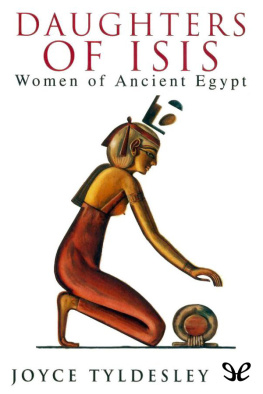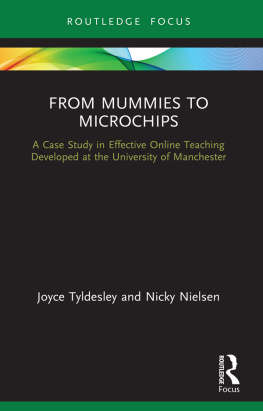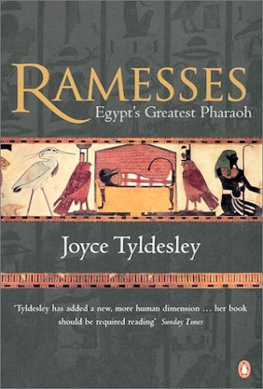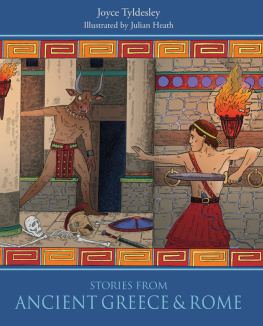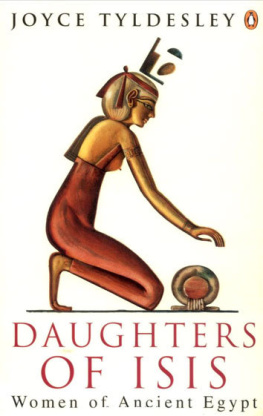Joyce Tyldesley - Daughters of Isis
Here you can read online Joyce Tyldesley - Daughters of Isis full text of the book (entire story) in english for free. Download pdf and epub, get meaning, cover and reviews about this ebook. year: 1994, publisher: ePubLibre, genre: Romance novel. Description of the work, (preface) as well as reviews are available. Best literature library LitArk.com created for fans of good reading and offers a wide selection of genres:
Romance novel
Science fiction
Adventure
Detective
Science
History
Home and family
Prose
Art
Politics
Computer
Non-fiction
Religion
Business
Children
Humor
Choose a favorite category and find really read worthwhile books. Enjoy immersion in the world of imagination, feel the emotions of the characters or learn something new for yourself, make an fascinating discovery.
- Book:Daughters of Isis
- Author:
- Publisher:ePubLibre
- Genre:
- Year:1994
- Rating:5 / 5
- Favourites:Add to favourites
- Your mark:
- 100
- 1
- 2
- 3
- 4
- 5
Daughters of Isis: summary, description and annotation
We offer to read an annotation, description, summary or preface (depends on what the author of the book "Daughters of Isis" wrote himself). If you haven't found the necessary information about the book — write in the comments, we will try to find it.
Daughters of Isis — read online for free the complete book (whole text) full work
Below is the text of the book, divided by pages. System saving the place of the last page read, allows you to conveniently read the book "Daughters of Isis" online for free, without having to search again every time where you left off. Put a bookmark, and you can go to the page where you finished reading at any time.
Font size:
Interval:
Bookmark:

For Steven and Philippa Anne Snape
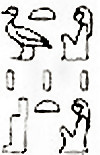
Histories of women usually bring with them histories of women's world and women's work, in other words, the daily life of a culture. This look at ancient Egyptian women is no different. British archaeologist and researcher Tyldesley illuminates women's positions as cooks, washerwomen, dancers, mourners, weavers, priestesses, mothers, wives and on very rare occasions pharaohs. Tyldesley doesn't try to simplify a subject complicated by linguistic subtleties, lack of archaeological evidence, ancient propaganda and the orientalist mythology of seething harems that early excavators imposed on ambiguous digs. What she does, and does well, is give an idea of what evidence is available and, in accessible, slyly cheery prose, recreate how women (and men) shopped, dressed and ate (the menus of the poor and less enterprising usually involved a fairly dull and rather flatulent rotation of bread, onions, lettuce, radish and pulses). Most intriguing, though, are Tyldesley's all-too-brief initial observations of the standing of Egyptian women. For all its emphasis on tradition, Egypt differed from much of the worst of Graeco-Roman paternalism: women were important factors in a child's heredity, not just passive bearers of men's genetics; they could own property; make legally binding contracts; sue; and, most amazingly, live alone.

Joyce Tyldesley
Women of Ancient Egypt
ePub r1.1
epubdroid02.02.16
Joyce Tyldesley, 1994
Illustrations: drawings included have been redrawn by the author from published sources
Cover retouch: Redna G.
Digital Editor: epubdroid
ePub base r1.0
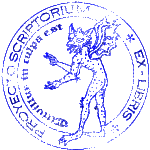

JOYCE ANN TYLDESLEY. Born in Bolton, Lancashire. She gained a first-class honours degree in archaeology from Liverpool University in 1981 and a doctorate from Oxford University in 1986. She is now Honorary Research Fellow at the School of Archaeology, Classics and Oriental Studies at Liverpool University, and a freelance writer and lecturer on Egyptian archaeology. Her other books are Hatchepsut: The Female Pharaoh, Nefertiti and Ramesses: Egypts Greatest Pharaoh.
Full details of books referred to in shortened form will be found in the Selected Bibliography.
[8] This excerpt from the New Kingdom instructions of Scribe Any has often been compared with the comments of a modern Egyptian villager, recorded by Winifred Blackman in 1927:
My wife is good, and I am pleased with her, but she must remain there [pointing downward]. My mother is up there [pointing upward]. Did she not carry me for nine months [pressing his hands on his stomach]? Did she not endure pain to give me birth, and did she not feed me from her breast? How could I not love her? My wife may change and lose her love for me. My mother is always the same; her love for me cannot change.



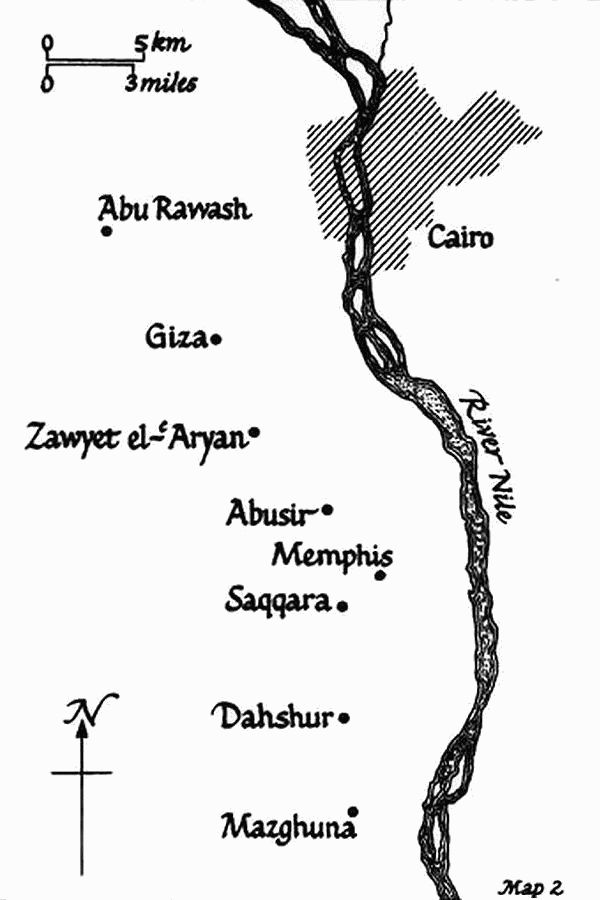
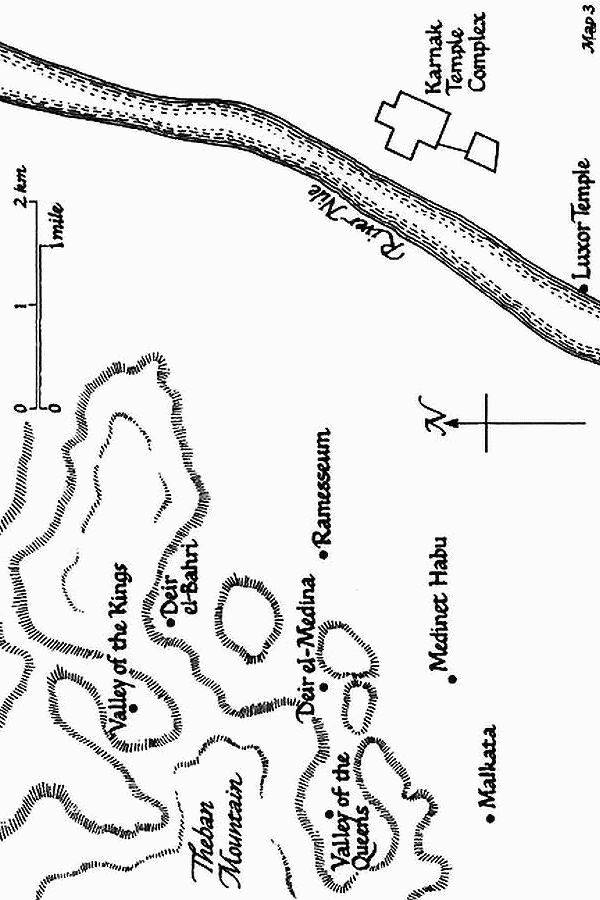
Objects recovered from Professor John Garstangs Beni Hassan and Abydos excavations are here illustrated by the original excavation photographs of 1904 and 1907-9. Thanks are due to Professor Slater of Liverpool University for permission to reproduce these hitherto unpublished photographs.
1 First Intermediate Period stela showing the Ladies Hetepi and Bebi, daughters of the Steward Sennedjsui. (Bolton Museum)
2 The elaborate dress and coiffure of a New Kingdom lady. (Tomb of Ramose, Thebes)
3 Old Kingdom pair-statue of a husband and wife. (Egyptian Museum, Cairo)
4 Stela of Iteti, accompanied by his three wives and two of his daughters. (Egyptian Museum, Cairo)
5 Middle Kingdom family stela featuring the scribal assistant Iy together with his wife, his children, and his parents. The precise role of the six Ladies of the House shown towards the bottom of the stela is unknown. (Bolton Museum)
6 Middle Kingdom model of a female dwarf carrying a child on her hip. (Liverpool University)
7 The dwarf god Bes. (Graeco-Roman temple of Dendera)
8 Fragment of an ivory magic wand with protective deities. (Liverpool University)
9 Wooden tomb models of two servant women, each carrying a box and two ducks. (Garstang: Beni Hassan)
10 Cord fertility dolls of the Middle Kingdom. (Garstang: Beni Hassan)
11 Reed brush and basket, typical household implements of the New Kingdom. (Liverpool University)
12a and 12b Large basket containing a foldaway stool. (Garstang: Beni Hassan)
13 New Kingdom ladies listening to a musician. (Sakkara tomb scene)
14 Wooden model of a djeryt. (Liverpool University)
15 The morning toilette of the early Middle Kingdom Queen Kawit, shown on her sarcophagus. (Egyptian Museum, Cairo)
16 Bronze razor with a handle in the form of a ducks head and neck. (Liverpool University)
17 Bronze mirror with lotus-shaped handle. (Liverpool University)
18 Model sandals from a Middle Kingdom tomb. (Garstang: Beni Hassan)
19 Ivory and slate bracelet from Nagada tomb of Queen Neith-Hotep. (Liverpool University)
20 Middle Kingdom cosmetic pots, cosmetic grinder and applicators. (Garstang: Beni Hassan)
21 Queen Nefertari representing the goddess Hathor on the faade of her Abu Simbel temple.
22 Queen Hatchepsut receives the royal ibs-crown from the god Amen-Re. (Scene from Hatchepsuts Red Chapel, Karnak)
23 The mortuary temple of Queen Hatchepsut at Deir el-Bahri, Thebes.
24 The Gods Wife of Amen, possibly Amenirdis I. (Medinet Habu, Thebes)
25 The goddess Hathor and the falcon-headed god Re. (Tomb of Nefertari, Valley of the Queens)
26 The mummy of the Lady Ray. (From Elliot Smith, G. (1912), Catalogue Gnral des Antiquits gyptiennes: The Royal Mummies
Font size:
Interval:
Bookmark:
Similar books «Daughters of Isis»
Look at similar books to Daughters of Isis. We have selected literature similar in name and meaning in the hope of providing readers with more options to find new, interesting, not yet read works.
Discussion, reviews of the book Daughters of Isis and just readers' own opinions. Leave your comments, write what you think about the work, its meaning or the main characters. Specify what exactly you liked and what you didn't like, and why you think so.

